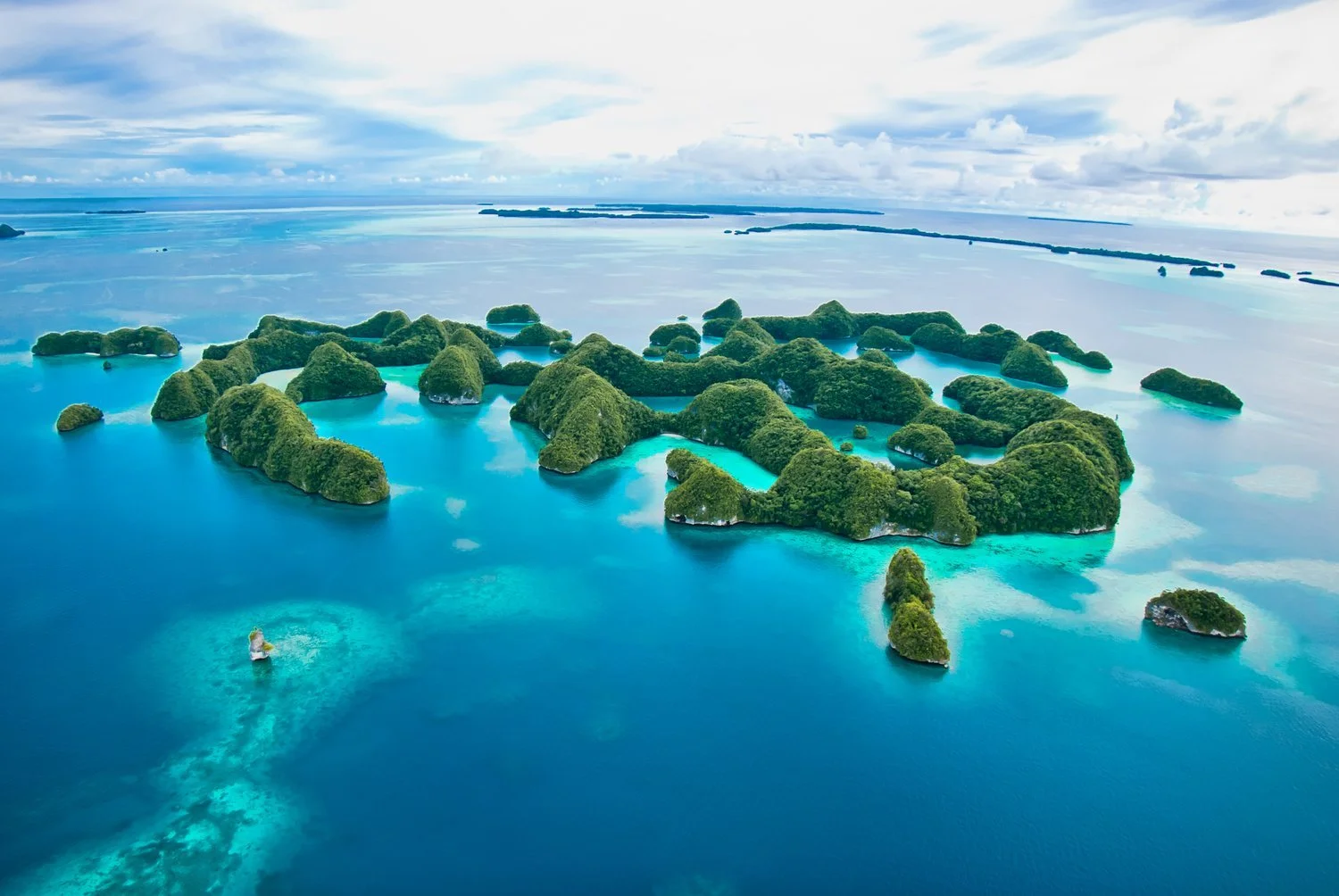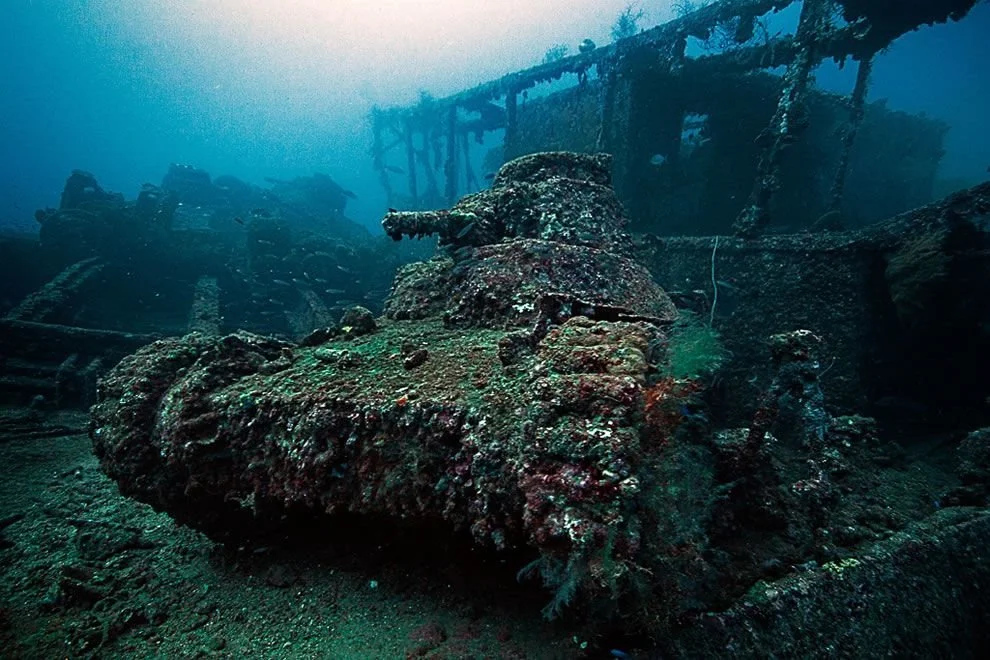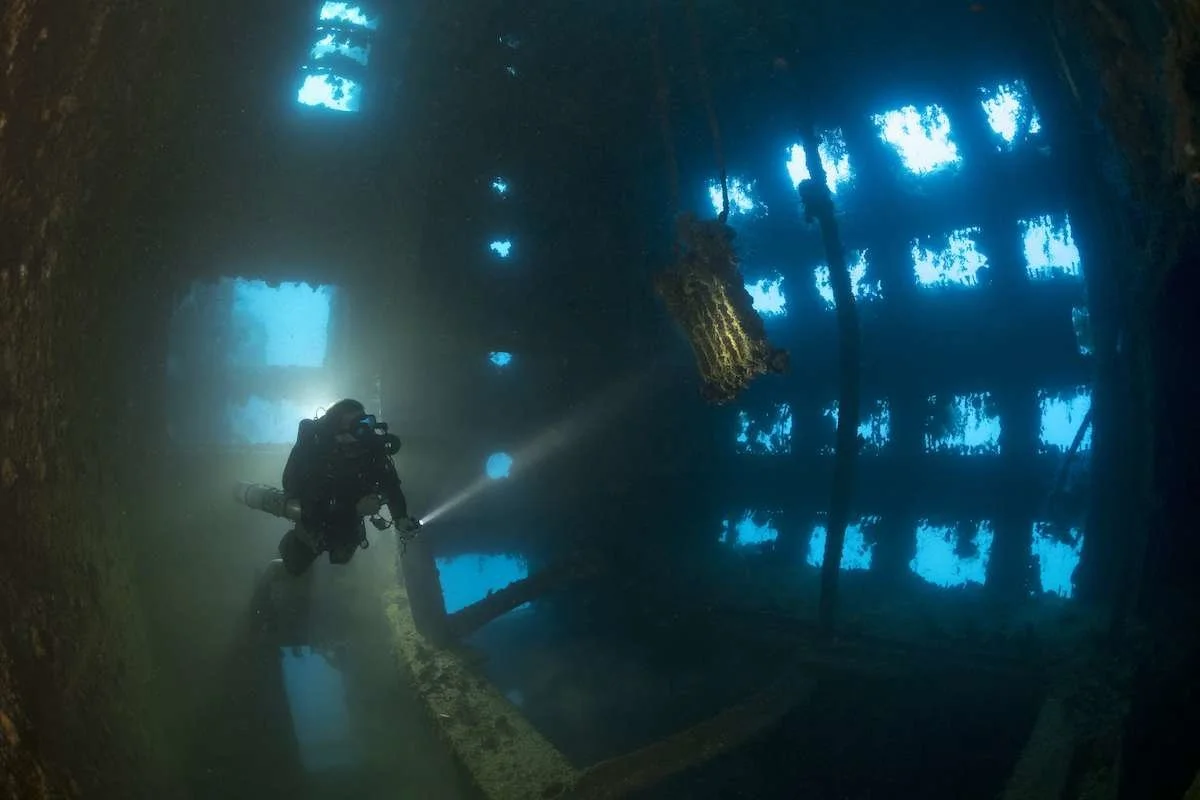Chuuk Lagoon
Worthy of a place on every bucket list, Chuuk Lagoon is undoubtedly the jewel in Micronesia’s crown.
With over 50 Japanese wrecks from the Second World War to explore and boasting the best wreck diving opportunities on earth, we’ve decided to take the 8,000 mile journey in November 2025 to find out for ourselves.
Regarded as somewhat easy to dive, Chuuk Lagoon is protected from strong ocean currents by a 140 mile reef averaging 30 to 40 metres deep. Despite this, various notable wrecks can still be discovered in the lagoons deeper, more challenging waters making it a perfect playground for both recreational and technical divers.
Undoubtedly, Chuuk and wreck diving are synonymous. The lagoons historically infamous wrecks (having been submerged for more than 70 years) have now become covered in both hard and soft corals.
Amazingly, despite now being home to all kinds of interesting marine life, these rusted relics remain mostly intact and appear just as impressive as they were almost 8 decades ago.
Some of the lagoons wrecks can still be penetrated, where once inside, divers will discover intricate engine rooms, Zero airplanes, rusting artillery guns, torpedoes, trucks, ammunition and even tanks.
Aside from the more well known wrecks, it is recommended that visitors also dive some of the lagoons outer reefs where they can enjoy superb coral formations and steep walls which are bustling with a plethora of rare and interesting pelagic marine life.
For those who may not know, ‘Chuuk’ in Chuukese actually means ‘mountain’, whereas the lagoon, which was known mainly as Truk (a mispronunciation of Ruk), was referred to as this until approximately the early 1990’s.
Still today referred to by tourists and visitors as ‘Truk’, (formerly the Truk Atoll), Chuuk is located in the central Pacific and sits about 970 nautical miles north-east of New Guinea. It is part of Chuuk State within the Federated States of Micronesia.
Throughout World War II, Truk was well known for being the primary base for Japanese operations conducted against Allied forces in New Guinea and Solomon Islands, whilst also serving as the forward anchorage for the Imperial Japanese Navy.
Within the South Pacific theatre, Truk was considered as the most formidable of all Japanese strongholds.
French oceanographer Jacques Cousteau and his team extensively explored Truk In 1969, which later proved instrumental to his 1971 television documentary about not just the lagoon, but also its submerged ghostly remains.
Jacques Cousteau - Image may be subject to copyright
Following exposure by Cousteau, the atoll became an overnight scuba sensation, attracting wreck enthusiasts from all over the world to dive its numerous, virtually intact sunken ships which are sometimes referred to as the "Ghost Fleet of Truk Lagoon".
Of special interest is the wreck of submarine I-169, also known as the ‘Shinohara’, which was lost when diving to avoid an impending bombing by American forces, resulting in her sinking on 4 April 1944 whist at her anchorage northwest of Dublon.
The attack took place whilst the Shinohara was taking on supplies, with her commanding officer and 20 crew members having gone ashore.
Previously, I-169 had participated in the attack on Pearl Harbor in December 1941.
At around 0900hrs Japan Standard Time, an air raid warning sounded when I-169′s watch officer ordered her to dive immediately to avoid attack by approaching U.S. Navy PB4Y-1 Liberator patrol bombers.
I-169 rapidly submerged with most of her deck hatches still open and her main induction valve unsecured, causing her after compartments to immediately flood. An immediate attempt to resurface failed, and although surviving crewmen sealed off the flooded compartments, I-169 sank to the bottom of Truck Lagoon where she still sits today in approximately 38 meters of water.
From the Heian Maru which is the lagoons biggest wreck at 163 metres in length, to the San Francisco Maru at 117 metres in length, there is no shortage of spectacular things to see at Truck.
Once inside their massive holds, divers can discover the remnants of everything from fighter aircraft, tanks, bulldozers, railroad cars, motorcycles, torpedoes, mines, bombs, munition boxes, radios, spare parts and artefacts.
Below deck, divers can find spaces littered with gas masks and depth charges, as well as thousands of other weapons and evidential parts from the second world war, including disturbing evidence of human remains.
With accommodation and flights now booked, it certainly is an exciting time for members of the SEPE Diving team, and we look forward to sharing our experience with you upon our return later next year.
Steve, Chris & Jonny













